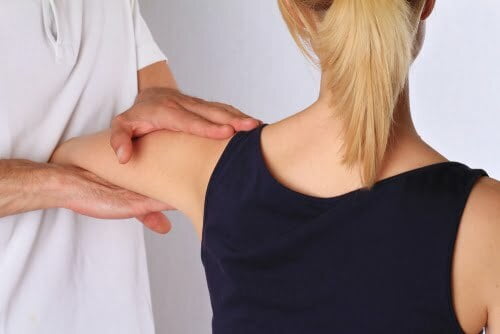
Manual therapy is a hands-on treatment option provided by a trained Physiotherapist and is best utilized to help people recover from injuries and those needing relief from acute and chronic pain. This type of Physiotherapy is different from other forms because the therapeutic techniques used are administered by hand instead of with machines or devices.
What Is Manual Therapy?
While manual therapy is intended to treat soft tissue, joint inflammation, and pain, it can also increase your range of motion, improving mobility and function. Physiotherapists who practice manual therapy rely on their hands to determine differences in tissue consistencies. They also employ a knowledgeable understanding of human anatomy which makes diagnosing and treatment planning a lot more effective.
Our team believes that manual therapy is an asset to patient recovery and symptom management. We can provide longer treatment times to ensure a more thorough experience and prolonged timeframe with your Physiotherapist.
Techniques
Manual therapy may be a useful tool for many health professionals, as it can be implemented in various ways. Some of the techniques may include:
- Soft Tissue Massage: The manipulation of the soft tissue, which includes muscles, tendons, or ligaments. This can be done through physical contact from the hands, arms, or elbows of your Physiotherapist.
- Assisted Active Range of Motion (AAROM): Your Physiotherapist will assist you as you move a joint through your available range of motion. The goal here is to get you to achieve as much range as possible.
- Passive Range of Motion (PROM): Your Therapist will move your joint through your available range of motion without you doing it yourself.
- Passive Stretching: Your Therapist will place a muscle in a lengthened position, which is then held for a short or long duration of time.
- Manual Traction: Provides force on a joint to allow for decompression in the joint area.
- Trigger Point Release: Trigger points are palpable taut hyperirritable areas of your muscle or connective tissue. These points can be released by the application of pressure to these tight areas. This will help reduce muscle spasms, as well as, pain.
- Joint Mobilization: The use of passive movements to the joint complex that’s applied at different velocities and amplitudes. This is used to restore mobility and function, as well as reduce pain.
- Joint Manipulation: The use of passive, high velocity, low amplitude thrusts to the joint complex within its anatomical limit. Much like mobilization, this technique aims to restore motion and function and reduce pain.
- Myofascial Release Technique (MRT): The application of pressure to the limitations in the myofascial tissue.
Instrument Assisted Soft Tissue Mobilization (IASTM): The use of specific tools to eliminate restrictions in your soft tissue or myofascial regions.

Is Manual Therapy Right for You?
The following conditions may be a sign that manual therapy could be an effective treatment for you:
- Neck pain
- Back pain
- Shoulder pain
- Knee pain
- Hip pain
- Ankle pain
- Temporomandibular joint pain
- Headaches
The Goals of Manual Therapy
Depending on your conditions and symptoms, your Physical Therapist will decide which manual therapy technique is right for you. A thorough assessment is the best way for a Physiotherapist to understand the condition of a client. Once known, the best techniques can be applied during the manual therapy session.
With the use of these techniques, Physical Therapists look to achieve many of the following outcomes:
- Manage or reduce pain
- Reduce inflammation of soft tissue
- Decrease restrictions and limitations with mobility
- Increase the range of motion of the joints
- Mobilize one or more specific joints
- Improve the tissue extensibility
- Promote relaxation
The ultimate goal is to improve the overall function of a client’s body through the use of manual therapy.
The Effectiveness of Manual Therapy
Every study shows different benefits of manual therapy. The difficulty in examining those studies is that the techniques used by Physical Therapists will vary, especially with the various conditions of clients. Manual therapy might not be suited for every condition, but many Physical Therapists are knowledgeable in the field and know when the techniques are appropriate to use.
Many benefits derive from the use of this form of Physiotherapy and produce effective results. Some of the effective benefits involved with manual therapy include the following:
- Reduces muscle tension
- Reduces inflammation
- Increases joint mobility
- Increases range of motion in the joints
- Improves tissue stability
- Improves tissue repair
Choosing the Right Physical Therapist
The right Physical Therapist will have the skill level and the training needed to move forward with manual therapy techniques. A reputable Physical Therapist Practitioner will have completed the education necessary for hands-on therapy. Every Winnipeg Physiotherapy clinic must abide by the law and employ qualified Physiotherapists.
Are you looking to relieve pain and instill comfort back into your life? At Fit4Life, we strive to ensure we meet the needs of all our clients. We provide many different treatment options associated with manual therapy, as well as a variety of other Physiotherapy services. Book an appointment with us today so you can have a better tomorrow.



